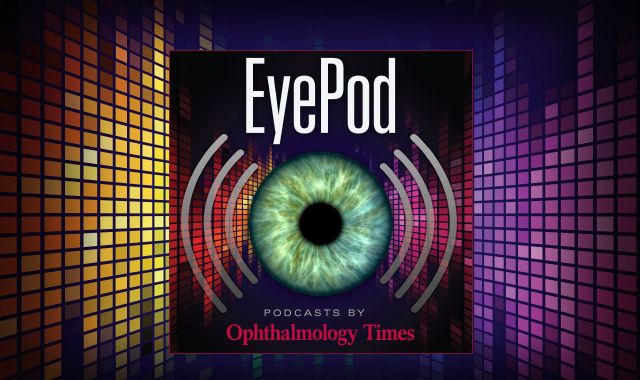News
Article
Red light therapy in children with myopia
Author(s):
Key Takeaways
- RLRL therapy shows potential in controlling myopia progression in children but raises concerns about retinal damage, including decreased cone density and abnormal lesions.
- AOSLO imaging revealed significant differences in cone density between RLRL users and non-users, particularly within 0.5 mm of the foveal center.
Chinese researchers reveal that low-level red light therapy may control myopia in children but raises concerns about retinal damage and cone density reduction.
(Image Credit: AdobeStock/Nima)

Chinese researchers found that repeated therapy using low-level red light (RLRL) is a potential intervention to control myopia progression in children, however, the investigators found decreases in cone density, particularly within 0.5 mm of the retinal fovea, with abnormal drusen-like lesions detected in some cases,1 reported Xinyi Liao, MD. She is from the Department of Ophthalmology, and the Beijing Key Laboratory of Ocular Disease and Optometry Science, Peking University People’s Hospital; and the College of Optometry, Peking University Health Science Center, all in Beijing, China.
Liao and colleagues explained that RLRL therapy is being evaluated for its ability to inhibit myopia progression in children and adolescents.2-8 This therapy uses a wavelength of 650 ± 10 nm, with an optical power of at least 0.29 mW entering the 4-mm pupil, complying with the international safety standard for laser use.9 However, it has been reported that continuous irradiation may induce a photothermal effect and, therefore, cause retinal damage,10 despite adhering to international standards.10 The investigators cited a study of retinal damage associated with RLRL treatment that raised concerns about the potential harm to users.11
The investigators used adaptive optics scanning laser ophthalmoscopy (AOSLO) in the current study because it enables high-resolution retinal imaging to measure cone cell density in vivo. In this study, they compared the changes in the cone photoreceptors in RLRL users with those in children with myopia aged 5 to 14 years who never underwent RLRL therapy.12,13 They obtained cone density measurements from the AOSLO images of the superior, inferior, nasal, and temporal meridians from the central fovea vicinity to approximately 4° retinal eccentricity to compare the differences in cone density and structure between cohorts, they described.
AOSLO results
The study included 99 children with myopia. The RLRL group included 52 children (27 girls; 97 eyes; mean age, 10.3 years) and the control group included 47 children (25 boys; 74 eyes; mean age, 9.8 years).
“The RLRL users showed decreased cone density within 0.5-mm eccentricity from the foveal center, most notably in the temporal region. At 0.3-mm temporal eccentricity, the RLRL group showed a mean difference of −2.1 × 103 cells/mm2 compared with the controls (95% confidence interval [CI], −3.68 to −0.59 × 103 cells/mm2; P = 0.003),” the authors reported.
They also found that 11 eyes had abnormal low-frequency, high-brightness signals near the fovea. The odds ratio of abnormal signals in the patients who used RLRL compared with the controls was 7.23 (95% CI, 1.15-303.45; Fisher’s exact test, P = 0.02). One child had relatively small cystoid abnormalities in the ganglion cell layer seen on optical coherence tomography; these abnormalities resolved 3 months after the RLRL therapy was discontinued.
Liao and colleagues commented, “RLRL therapy administered for at least 1 year was associated with reduced cone density in the paracentral fovea and other subtle retinal abnormalities in some children receiving this therapy for myopia control compared with evaluation of nonusers of RLRL therapy. Although RLRL therapy might control the progression of myopia, further studies are needed to provide more definitive information regarding longer-term efficacy and safety. The AOSLO findings from this investigation support further evaluation of the risk-benefit balance of RLRL therapy in pediatric patients with myopia and potentially the inclusion of additional studies that include AOSLO evaluations as part of the efficacy and safety of RLRL therapy.”
References
Liao X, Yu J, Fan Y, et al. Cone density changes after repeated low-level red light treatment in children with myopia. JAMA Ophthalmol. 2025; Published online April 24. doi:10.1001/jamaophthalmol.2025.0835
Wang W, Jiang Y, Zhu Z, et al. Axial shortening in myopic children after repeated low-level red-light therapy: post hoc analysis of a randomized trial. Ophthalmol Ther. 2023;12:1223-1237. doi:10.1007/s40123-023-00671-7
He X, Wang J, Zhu Z, et al. Effect of repeated low-level red light on myopia prevention among children in China with premyopia: a randomized clinical trial. JAMA Netw Open. 2023;6:e239612. doi:10.1001/jamanetworkopen.2023.9612
Jiang Y, Zhu Z, Tan X, et al. Effect of repeated low-level red-light therapy for myopia control in children: a multicenter randomized controlled trial. Ophthalmology. 2022;129(5):509-519. doi:10.1016/j.ophtha.2021.11.023
Chen Y, Xiong R, Chen X, et al. Efficacy comparison of repeated low-level red light and low-dose atropine for myopia control: a randomized controlled trial. Transl Vis Sci Technol. 2022;11(10):33. doi:10.1167/tvst.11.10.33
Youssef MA, Shehata AR, Adly AM, et al. Efficacy of repeated low-level red light (RLRL) therapy on myopia outcomes in children: a systematic review and meta-analysis. BMC Ophthalmol. 2024;24:78. doi:10.1186/s12886-024-03337-5
Zhou L, Tong L, Li Y, Williams BT, Qiu K. Photobiomodulation therapy retarded axial length growth in children with myopia: evidence from a 12-month randomized controlled trial evidence. Sci Rep. 2023;13:3321. doi:10.1038/s41598-023-30500-7
Xiong R, Zhu Z, Jiang Y, et al. Sustained and rebound effect of repeated low-level red-light therapy on myopia control: a 2-year post-trial follow-up study. Clin Exp Ophthalmol. 2022;50:1013-1024. doi:10.1111/ceo.14149
LIA. American National Standard for Safe Use of Lasers home page. Accessed April 20, 2024. https://www.lia.org/
Ostrin LA, Schill AW. Red light instruments for myopia exceed safety limits. Ophthalmic Physiol Opt. 2024;44:241-248. doi:10.1111/opo.13272
Liu H, Yang Y, Guo J, Peng J, Zhao P. Retinal damage after repeated low-level red-light laser exposure. JAMA Ophthalmol. 2023;141:693-695. doi:10.1001/jamaophthalmol.2023.1548
Merino D, Loza-Alvarez P. Adaptive optics scanning laser ophthalmoscope imaging: technology update. Clin Ophthalmol. 2016;10:743-755. doi:10.2147/OPTH.S64458
Wynne N, Carroll J, Duncan JL. Promises and pitfalls of evaluating photoreceptor-based retinal disease with adaptive optics scanning light ophthalmoscopy (AOSLO). Prog Retin Eye Res. 2021;83:100920. doi:10.1016/j.preteyeres.2020.100920
Newsletter
Don’t miss out—get Ophthalmology Times updates on the latest clinical advancements and expert interviews, straight to your inbox.





